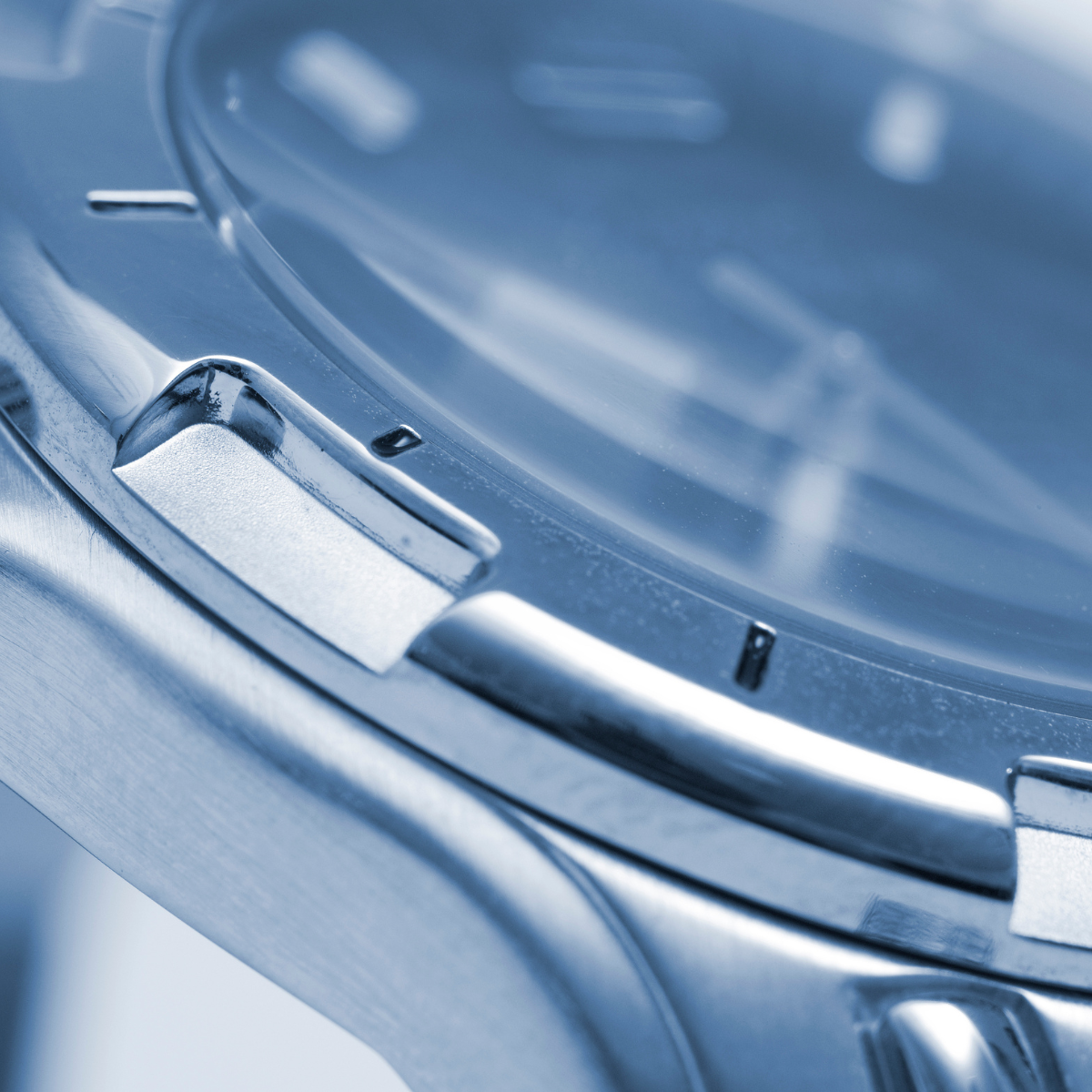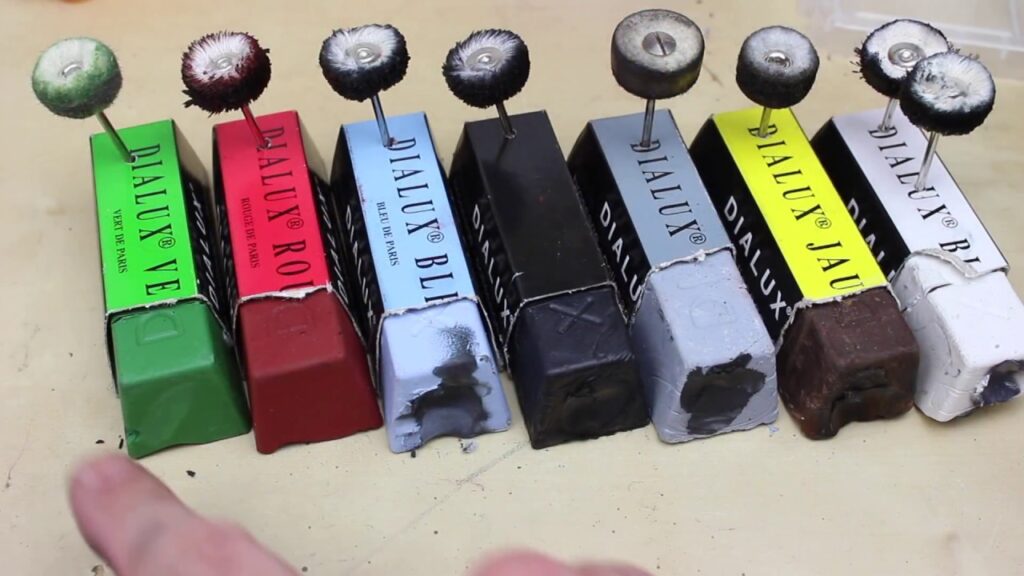
In this informative article, “How to Use Dialux Polishing Compounds for All Metals and Plastics,” you will learn about the various types of Dialogues polishes and how they can be used to achieve different finishes on different materials. The article highlights the importance of starting with an even sanded surface and provides step-by-step instructions on how to use the different polishes, from pre-polishes for softer metals to final polishes for harder metals. It also offers suggestions on which polishes to use for specific materials and finishes, such as gold, silver, and steel. Whether you’re a jeweler or someone interested in polishing metals and plastics, this article will provide you with valuable insights and recommendations for achieving the desired results with Dialux polishing compounds.
Click Here To Read About Seiko Watches and Rolex Watches!
Choosing the Right Polishing Compound
When it comes to achieving a professional and flawless finish on your metalwork or jewelry, choosing the right polishing compound is crucial. A polishing compound is a mixture of abrasive materials that helps to remove scratches, tool marks, and other imperfections from the surface of the metal. There are various types of polishing compounds available, each with different levels of abrasiveness and suitability for different materials. Understanding the different types of polishing compounds and their specific uses can help you achieve the best results for your desired finish.
Different Types of Polishing Compounds
Polishing compounds come in different forms, including bars, pastes, and powders. Each form has its own advantages and is suitable for different polishing techniques. Bars are solid blocks of compound that can be applied directly to the surface using a rotating buffing wheel. They are easy to use and offer precise control over the amount of compound applied. Pastes, on the other hand, are softer and more pliable. They are typically applied to a separate buffing wheel, allowing for larger surface areas to be covered quickly. Powders, meanwhile, are often mixed with water or oil to create a paste-like consistency. They are versatile and can be applied using various tools such as rotary polishers or hand-held buffing pads.
Understanding Abrasiveness Levels
Polishing compounds are classified into different levels of abrasiveness, ranging from coarse to fine. Coarse compounds are typically used for initial cutting and removing deep scratches or imperfections. They are aggressive and can quickly remove material from the surface. Medium compounds are ideal for refining the surface and smoothing out any remaining scratches or tool marks left by the coarse compound. Fine compounds, on the other hand, are used for final polishing to achieve a high-gloss shine. They remove any remaining imperfections and bring out the luster of the metal.

Click Here To See More Luxury Watches.
Considerations for Different Materials
Different materials require different polishing compounds to achieve the desired finish. Soft metals such as gold or silver require a gentle polishing compound to avoid damaging the delicate surface. Hard metals like stainless steel or titanium, on the other hand, require a more aggressive compound to remove tough scratches or discolorations. It is important to choose a polishing compound that is specifically formulated for the material you are working with to ensure optimal results. Always refer to the manufacturer’s recommendations or consult with a professional in the field to determine the most suitable polishing compound for your specific material.
Preparing the Surface for Polishing
Before applying the polishing compound, it is important to prepare the surface of the metal by sanding and removing any tool marks or scratches. This ensures that the polishing compound can work effectively and achieve a smooth and even finish.
Sanding the Surface
Start by sanding the surface of the metal with progressively finer grades of sandpaper. This helps to remove any coarse scratches or blemishes and creates a smooth and even surface for the polishing compound to work on. Begin with a coarse grit sandpaper, such as 180 or 220, and gradually move up to finer grits, such as 400 or 600, until the surface is smooth to the touch.
Removing Tool Marks and Scratches
If there are any visible tool marks or deep scratches on the metal, it is essential to remove them before polishing. This can be done using various tools such as files, sanding sticks, or emery cloth. Start by using a coarse tool, such as a file, to remove the majority of the mark or scratch. Then, switch to a finer tool, such as sanding sticks or emery cloth, to refine the surface and remove any remaining imperfections. Take care to sand in the direction of the grain or pattern of the metal to avoid creating new scratches.
Using Pre-Polishes
Pre-polishes are specific types of polishing compounds that are used before the final polishing stage. They are designed to remove any remaining scratches or imperfections left by the initial sanding and tool marks removal process, and prepare the metal for the final polishing.
Yellow Pre-Polish for Soft Metals
For soft metals such as gold or silver, a yellow pre-polish compound is recommended. This compound has a relatively low level of abrasiveness and is gentle enough to avoid damaging the delicate surface of the metal. It helps to refine the surface further and remove any remaining imperfections after the initial sanding and tool marks removal.
Orange Pre-Polish for Steel
For steel or other hard metals, an orange pre-polish compound is more suitable. This compound has a higher level of abrasiveness and is capable of removing tough scratches or discolorations from the surface of the metal. It prepares the metal for the final polishing, ensuring a smooth and lustrous finish.
Using Stitched Mops for Pre-Polishing
When applying pre-polish compounds, it is recommended to use stitched mops as the polishing tool. Stitched mops are made of multiple layers of cloth stitched together, providing a firm and durable surface for the compound to be applied. They can be easily attached to a polisher or bench grinder, allowing for efficient and controlled application of the pre-polish compound.
Applying the Polish
After the pre-polishing stage, it is time to apply the final polish to achieve the desired finish. Choosing the right polish for your specific material is crucial to achieve optimal results.
Choosing the Right Polish for Your Material
Just like with the pre-polish compounds, different materials require different polishing compounds for the final polishing stage. Polishes for soft metals are typically gentler and smoother, to avoid damaging the delicate surface. Polishes for hard metals, on the other hand, are more aggressive and provide a higher level of abrasiveness to remove any remaining imperfections and bring out the shine.
Using Soft Mops for Polishing
When applying the final polish, it is recommended to use soft mops as the polishing tool. Soft mops are made of layers of cotton or other soft materials, providing a smooth and gentle surface for the polish to be applied. They are ideal for achieving a high-gloss shine on delicate or softer metals. Soft mops can be attached to a polisher or bench grinder, allowing for efficient and controlled application of the polish.
Using a Dremel for Polishing
In some cases, a Dremel or rotary tool can be used for polishing small or intricate pieces of metalwork or jewelry. Dremel tools often come with various attachments and accessories, including polishing wheels or brushes, that can be used with polishing compounds to achieve a professional finish. They offer precision and control, making them a popular choice for small-scale polishing projects.
Final Finishing and Super Finishing
For certain metals or applications, a final finishing or super finishing process may be required to achieve the desired level of polish and shine.
Using Gray Bar for Polishing Steel
For steel or other hard metals, a gray bar polish can be used for the final finishing stage. Gray bars are highly abrasive and are capable of removing micro-scratches and imperfections to achieve a mirror-like finish. They are typically applied using a cotton or wool buffing wheel, providing a high level of shine and smoothness.
Using Green Polish for Hard Metals
Green polish compounds are specifically designed for hard metals and provide a super finishing effect. They are highly abrasive and are capable of removing even the finest scratches and imperfections, leaving behind a flawless and reflective surface. Green polish compounds are typically applied using a cotton or wool buffing wheel, ensuring a high-gloss finish.
Super Finishes for Silver and Gold
For silver or gold, achieving a super finish requires a different approach. Rather than using abrasive compounds, super finishing is achieved through burnishing. Burnishing involves rubbing the surface of the metal with a hard and smooth material, such as steel or agate, to compress and smooth the surface. This creates a highly reflective surface without removing any material from the metal.
Polishing Recommendations for Different Materials
Now let’s take a look at some recommended polishing compounds for specific materials:
Recommended Polishes for Gold
For gold, a rouge polishing compound is recommended for the final polishing stage. Rouge compounds are typically red in color and provide a high level of shine and smoothness. They are ideal for achieving a lustrous finish on gold without causing any damage to the delicate surface.
Recommended Polishes for Silver
For silver, a white polish compound is highly recommended. White compounds are gentler and smoother, making them perfect for achieving a high-gloss shine without causing any scratches or damages to the surface. They also help to remove tarnish and oxidation, restoring the brightness and luster of the silver.
Recommended Polishes for Steel
For steel, a blue or gray polishing compound is recommended for the final polishing stage. Blue or gray compounds are highly abrasive and are capable of removing tough scratches or imperfections from the surface of the steel. They provide a mirror-like finish and are suitable for various steel applications, such as cutlery or automotive parts.
Test the Water with Yellow and White Polishes
If you are unsure about the type of polishing compound to use for your specific material, it is always a good idea to start with yellow or white polishes. Yellow polishes are typically designed for soft metals, while white polishes are gentler and suitable for a wide range of materials. Conducting a test on a small and inconspicuous area of the metal can help you determine the most suitable polishing compound for your specific project.
Using Dialux Polishing Compounds on Different Tools
Dialux is a popular brand of polishing compounds known for their high-quality and effectiveness. They are compatible with various tools and can be used for different metalworking applications. Let’s explore how Dialux polishing compounds can be used with different tools:
Polishing Bench Blocks
Bench blocks are commonly used in jewelry making or metalworking as a stable surface for various processes, including polishing. To use Dialux polishing compounds with a bench block, simply apply a small amount of compound onto the surface of the block and rub the metal against it in a circular motion. This allows the compound to be evenly distributed and ensures an efficient polishing process.
Polishing Punches
Is The Rolex Submariner Better – Click Here to Learn More!

